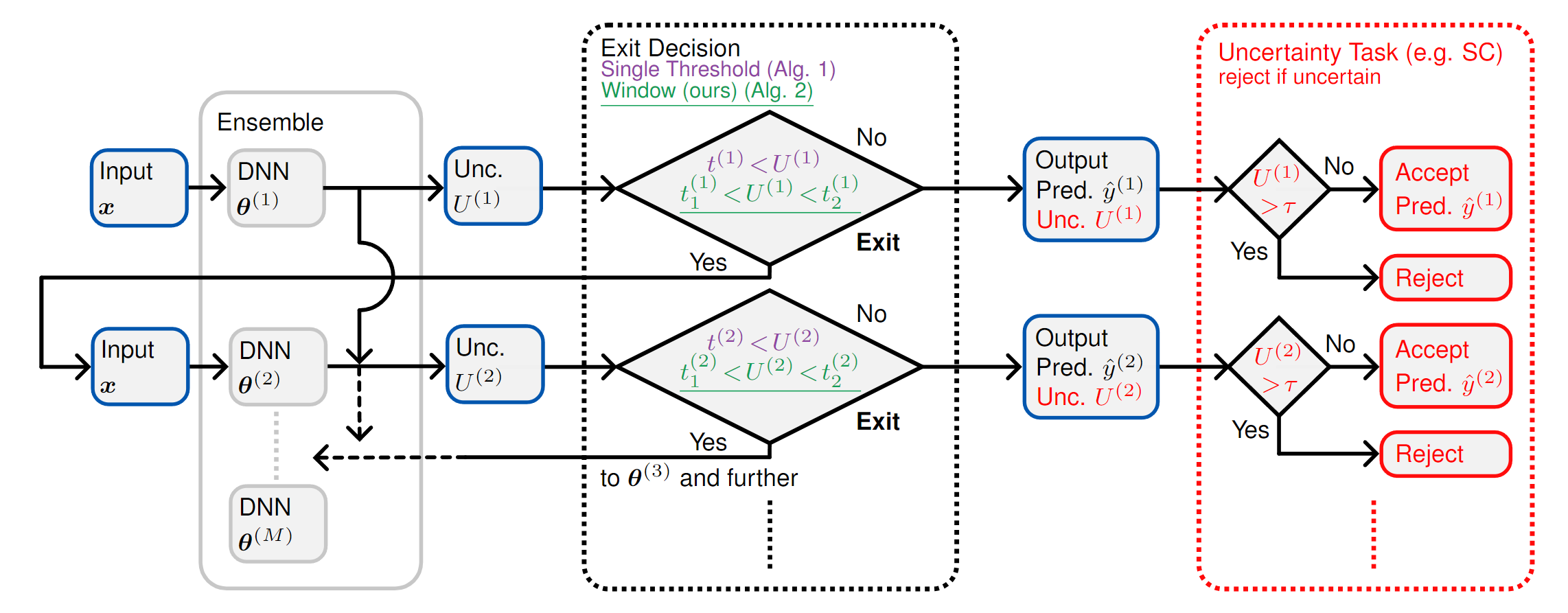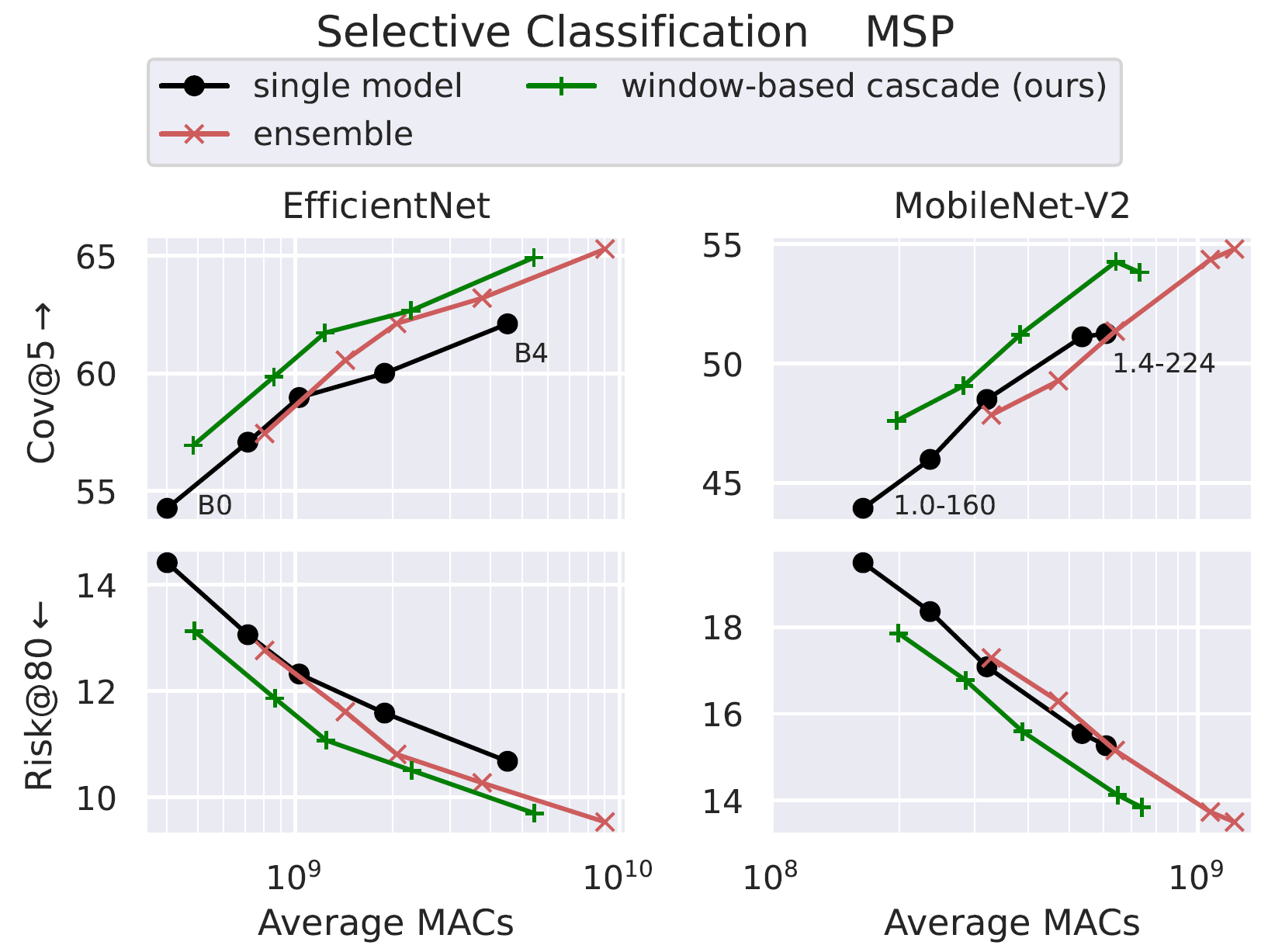Window-Based Early-Exit Cascades for Uncertainty Estimation: When Deep Ensembles are More Efficient than Single Models (ICCV 2023)
This repository contains code to reproduce the results in our paper. If you found either the paper or the code useful please consider citing it:
@InProceedings{Xia_2023_ICCV,
author = {Xia, Guoxuan and Bouganis, Christos-Savvas},
title = {Window-Based Early-Exit Cascades for Uncertainty Estimation: When Deep Ensembles are More Efficient than Single Models},
booktitle = {Proceedings of the IEEE/CVF International Conference on Computer Vision (ICCV)},
month = {October},
year = {2023},
}The main requirements for this repository are:
python
pytorch (+torchvision)
pytorch-lightning
numpy
pandas
matplotlib
seaborn
scikit-learn
tqdm
ptflops
The datasets used in our work can be obtained by following the links and/or instructions below.
- ImageNet
- OpenImage-O: download the test set and place the datalist file
utils/openimages_datalist.txtthe level above the directory containing the images. - iNaturalist
After obtaining the data edit experiment_configs/change_paths.py such that the dictionary data_paths is updated with the correct absolute paths to all the datasets and RESULTS points to the directory where you want results (plots and .csv files) to be saved. Then run the script to update all the configuration .json files.
cd experiment_configs
python change_paths.py
cd ..To train all models in order to reproduce our results run:
cd models
mkdir saved_models
cd ..
cd experiment_scripts
chmod +x *
./train_ensembles.sh
cd ..Note that the configs by default use 8 GPUs. To use fewer GPUs change the field "gpu_id" in the corresponding .json config file or pass the desired GPU indices to the command line argument --gpu. An example of training a single model:
python train_lightning.py \
experiment_configs/efficientnetb2_imagenet.json \
--seed 9 --gpu 23 --amp 1 --slurm 0After training, the saved model weights should be in models/saved_models. To evaluate all models run
cd experiment_scripts
chmod +x *
./test_cascades.sh
cd ..This will run inference, cache logits, then evaluate cascade performance in both directions. An example of evaluating a single cascade would be:
python test.py \
experiment_configs/efficientnetb2_imagenet.json \
--seed 1 --gpu 1
python test.py \
experiment_configs/efficientnetb2_imagenet.json \
--seed 2 --gpu 1
python cascade_results.py \
experiment_configs/efficientnetb2_imagenet.json \
--seeds 12 \
--strategy_func window_threshold_strategy \
--exit_metric confidence --unc_task cov@5Note that in this repository Maximum Softmax Probability (MSP) is aliased to "confidence". test.py only supports evaluation on a single GPU.
To obtain the plots from the main results in our paper run
cd experiment_scripts
./plot_main_results.sh
cd ..An example of a single plot:
python plot_unc_macs_comparison.py \
experiment_configs/efficientnetb0_imagenet.json \
--model_family efficientnet \
--seeds 12 \
--unc_task risk@80 \
--exit_metric confidence \
--strategy_func window_threshold_strategy \
--ood_data openimage-oTo measure and plot throughput and latency run
cd experiment_scripts
./efficientnet_lat_throughput.sh
cd ..Note that this needs to be run after the main evaluation as it uses values from the .csv files generated.
To obtain the MSDNet results in our paper first download the publically available weights from https://github.com/kalviny/MSDNet-PyTorch. Rename the models folder to msdnet_pretrained and place it inside models/saved_models. Then run
cd experiment_scripts
./msdnet_eval.sh
cd ..
